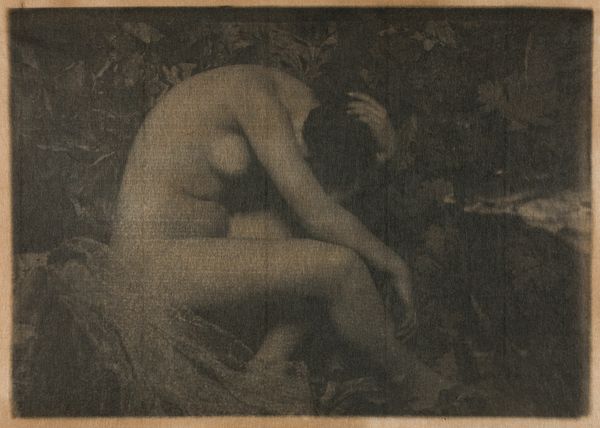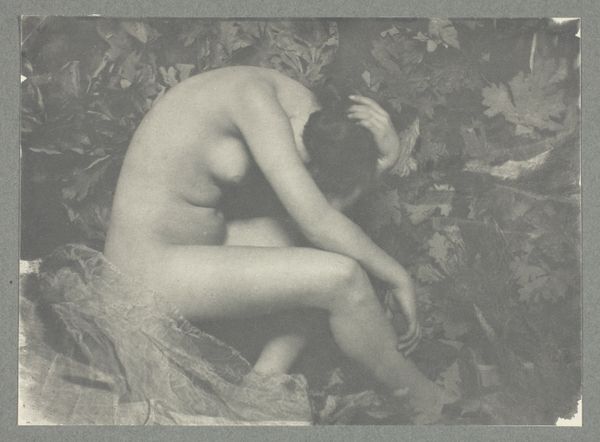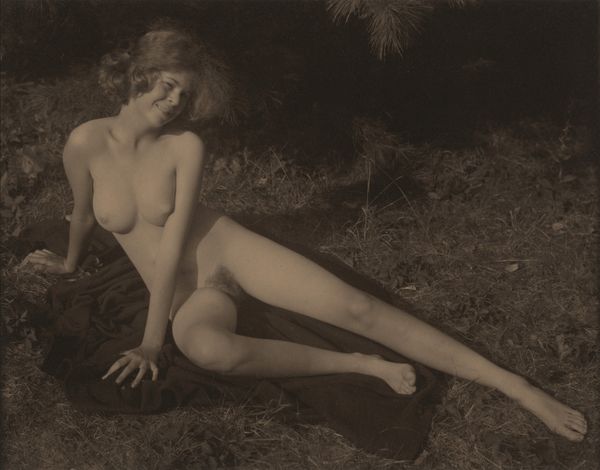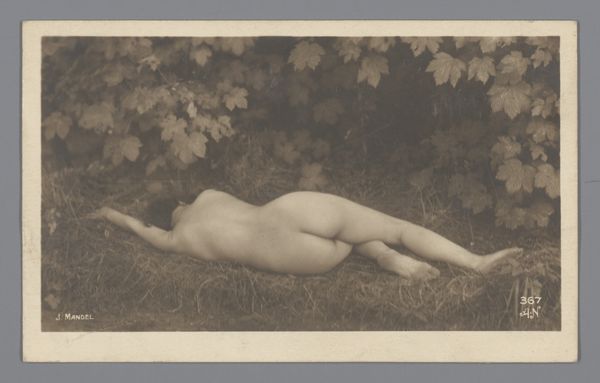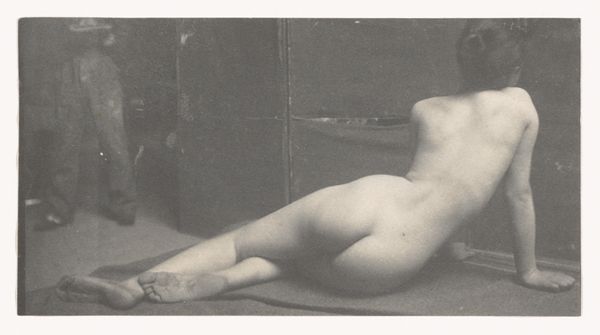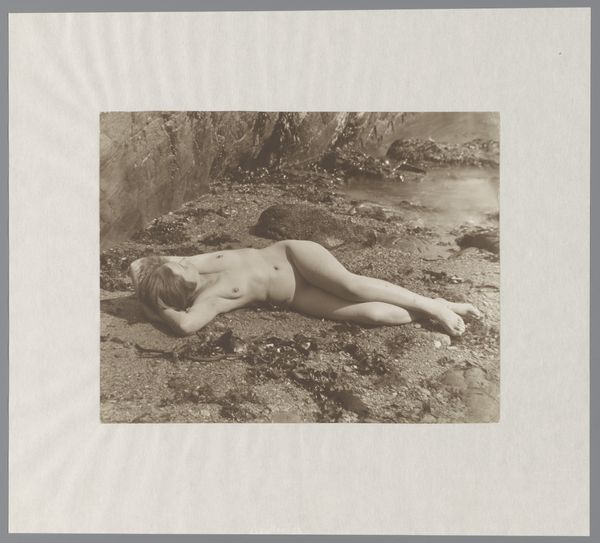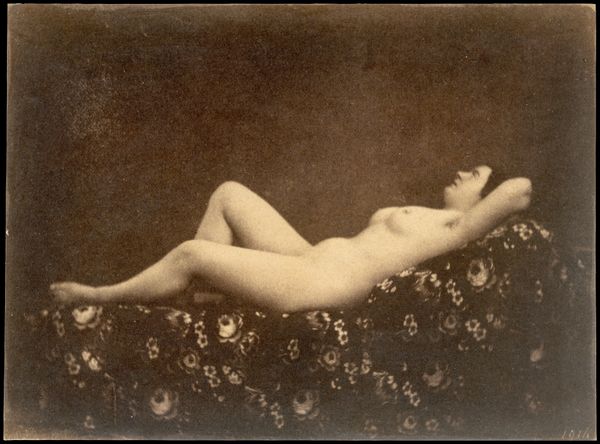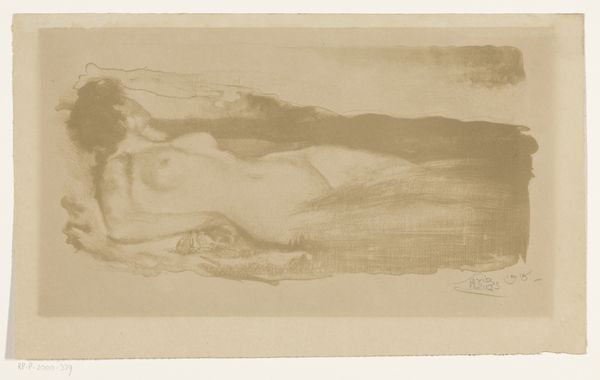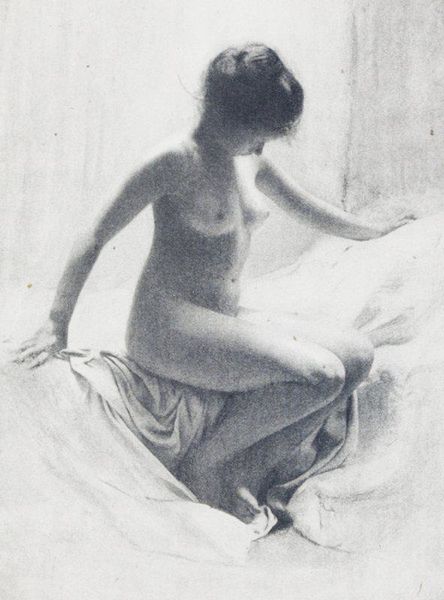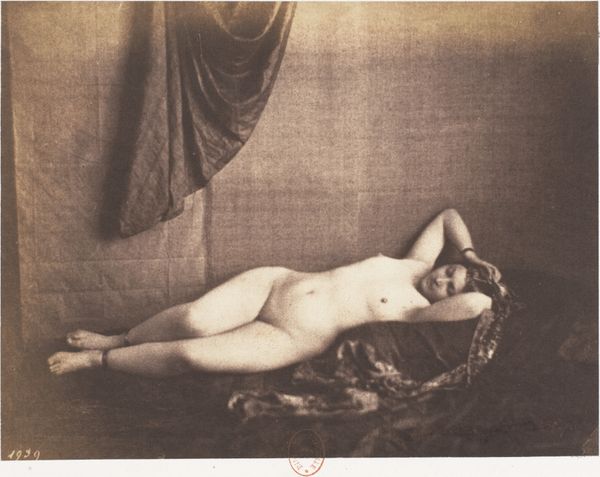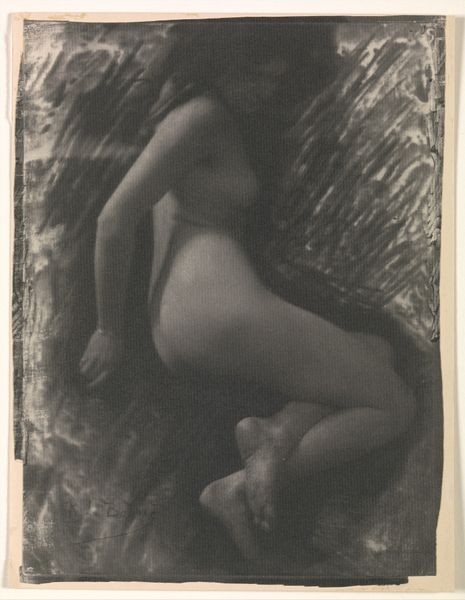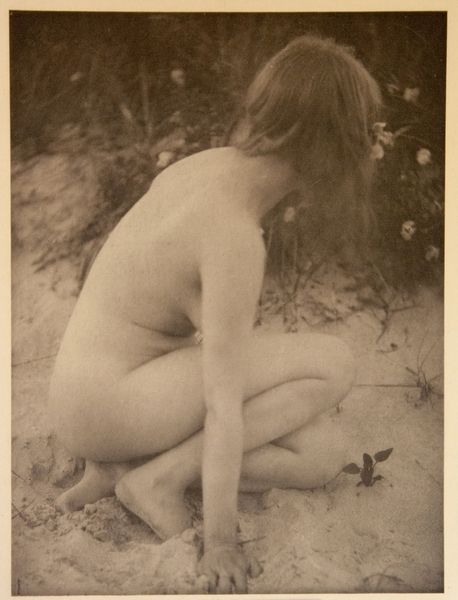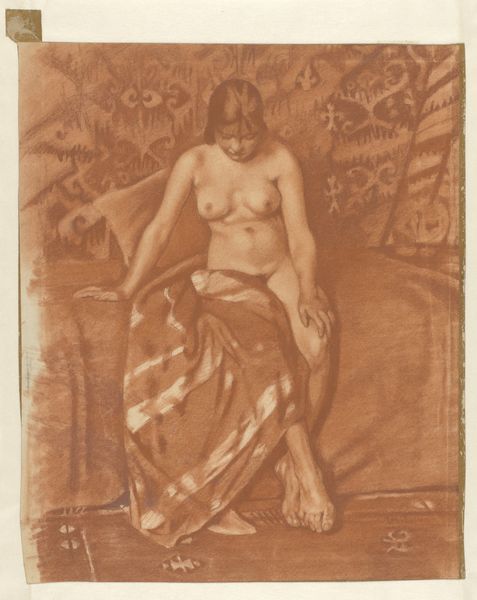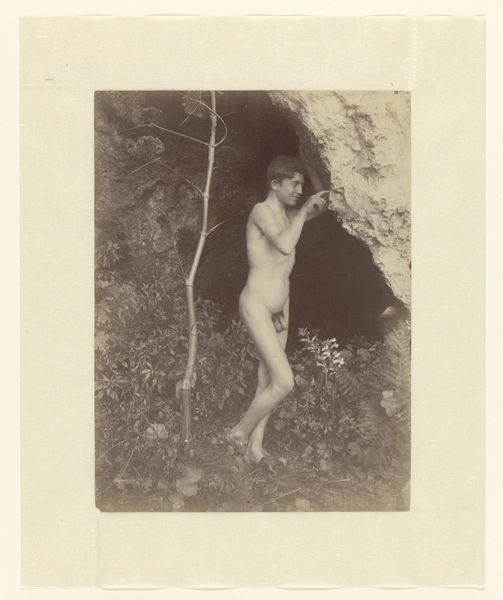
photography
#
portrait
#
16_19th-century
#
figuration
#
photography
#
symbolism
#
nude
#
erotic-art
Dimensions: 10.8 × 15 cm (image); 13.2 × 16.1 cm (paper); 27.6 × 38 cm (mount)
Copyright: Public Domain
Curator: Before us we have Charles I. Berg's "Weeping Magdalen," a photogravure created around 1897, now residing here at The Art Institute of Chicago. The image immediately conveys something of profound, quiet grief. It feels so intimate, almost voyeuristic, doesn't it? Editor: Voyeuristic, yes, precisely! I think it also whispers of something illicit or at least socially precarious. This isn’t some melodramatic public display. This is… a bedroom drama made photographic. It seems all surface affectation given how manufactured photography itself is in its processes. Curator: Tell me more about "manufactured." Editor: Well, look closely – or as closely as the medium will let you given it is nearly monochromatic. See how the texture, the softness, is achieved through the photogravure process. There's this flattening effect, almost like an ad, but then look closer—there are these soft textures of lace, fabric and fur! Not so superficial then. I feel Berg carefully selected the materials to make a point here. Curator: Absolutely, but I sense more. Consider the composition; she's framed against what appears to be patterned fabric. It's almost a screen, adding to this sense of confinement, of being trapped in this singular moment of despair. The very essence of it is staged. Her nudity speaks to vulnerability. It all contributes to this feeling of… staged authenticity. Editor: It’s an odd combination – staged and yet somehow confessional. Do you think Berg had in mind to address labor exploitation or production? Is the reference about erotic art merely incidental or is it by intention? What sort of Magdalen is he interested in evoking in fin-de-siecle Chicago? Curator: It’s as if Berg aimed to provoke and protect her simultaneously. Editor: True, this makes it deeply modern in its construction, doesn’t it? Maybe the title is another artifice meant to throw the viewer from Berg’s ultimate material aims? We need more of Berg, clearly, and more discussion on works like this! Curator: Perhaps that's the deepest layer of "Weeping Magdalen"—its capacity to draw us into such speculation. The artist gives and the art gives, but we, ultimately, make it what it becomes. Thank you.
Comments
No comments
Be the first to comment and join the conversation on the ultimate creative platform.
